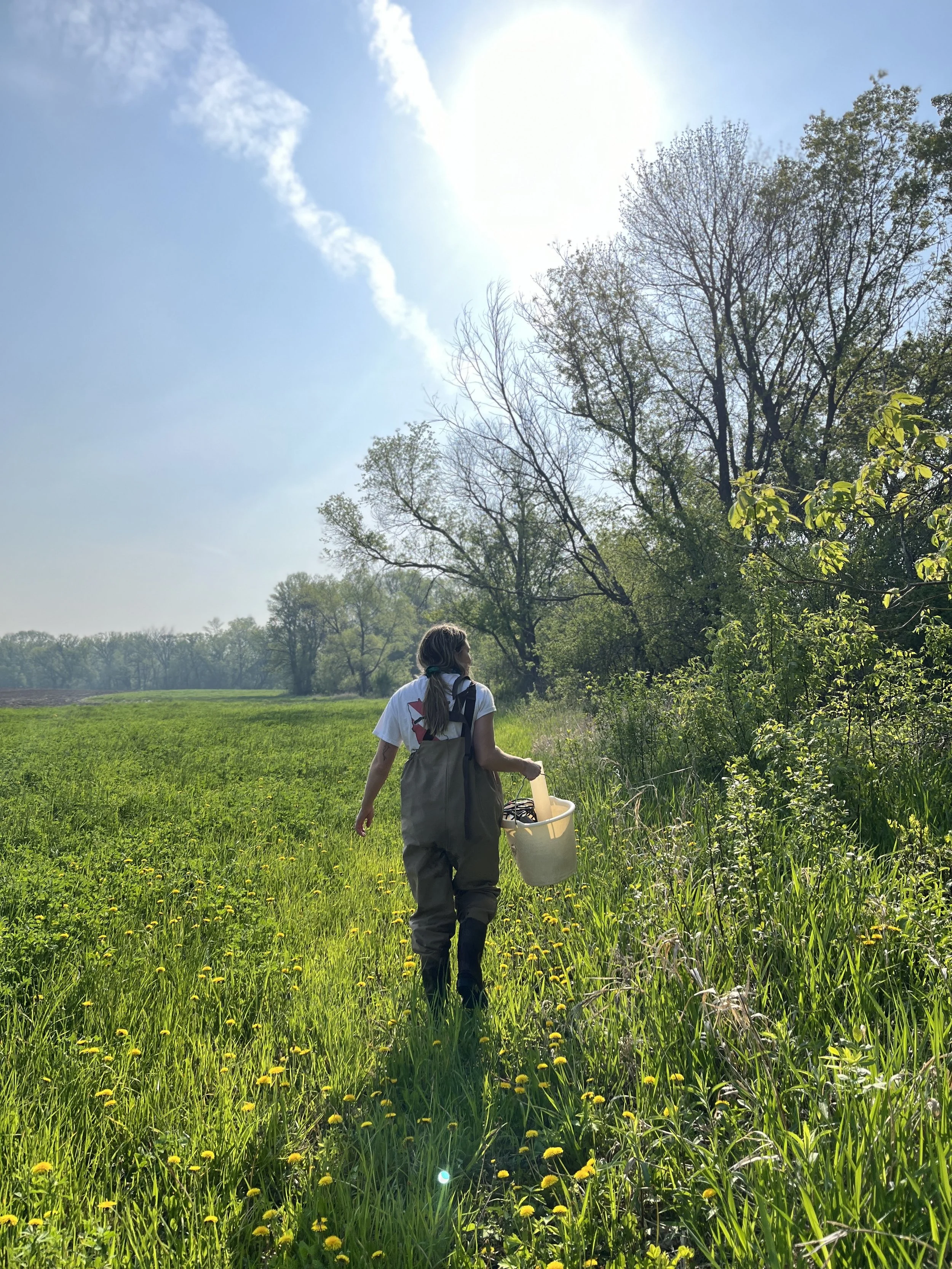
Farmers Protecting Bridgewater Streams
We are in a long-term partnership with several organizations to support farmers in adopting conservation practices that protect the watershed health of Rice Creek and its adjacent streams.
Since July 2018, nearly 30% of the area's tillable farmland has adopted cover crops. During this period, we partnered with several organizations and funders to study fields with and without cover crops, evaluating their effects on water quality, crop yields, and fertilizer use.
The “Why”: Water Quality & Aquatic Life
Rice Creek is known for its self-sustaining population of brook trout, which thrive in cold, clean waters. These fish are rare compared to others because they are sensitive to various factors, including temperature, water quality, and habitat. Rice Creek is on Minnesota’s list of impaired waters due to high levels of nutrients and sediment, offering an opportunity to study this rare and sensitive fish and promote changes to protect its existence.
The structure of a stream is important to trout. For example, they like to hunt for prey under overhanging banks or trees, and females lay eggs in shallow depressions among pebbles. Good quality shoreland habitat is important. Tall grasses or trees help to shade and maintain cool waters. Land use near the stream can impact the biological community, particularly the prey species that trout rely on.
Traditional agricultural practices have an impact on water quality in streams like Rice Creek. Runoff often contains fertilizers, pesticides, and sediment, leading to nutrient pollution. Nitrates from fertilizers can cause harmful algal blooms, creating "dead zones" that threaten aquatic life. This project explores how changes in farmer behavior can reduce nutrient pollution and improve conditions for brook trout survival.
The “How”: Cover Crops & Water Sampling
In our research project within the Rice Creek subwatershed, we collaborated with a dozen local farmers who committed to planting cover crops on approximately 1,000 acres, accounting for about 30% of the tillable farmland in the area. To evaluate the impact of these cover crops on water quality, we conducted bi-weekly water sampling from March to November on fields with and without cover crops. These samples were collected from tile drainage systems and the receiving water, Rice Creek, to measure nitrate concentrations. This systematic approach allowed us to evaluate the effectiveness of cover crops in reducing nutrient runoff and improving overall water quality in the watershed.
The “Results”: What We’ve Learned
-
Water Quality Improvements
The data consistently showed that fields with cover crops had lower nitrate concentrations in tile drainage throughout the growing season of every year. These results indicate that cover crops can effectively reduce nutrient runoff, improving water quality.
-
Fertilizer Efficiency
The reduction in nitrogen fertilizer application on fields with cover crops and No-till or Strip-till practices suggests that farmers can achieve similar yields with less fertilizer, leading to cost savings and environmental benefits.
-
Yield Trade-offs
Although corn yields were slightly lower with cover crops, soybean yields rose, and the potential for savings through less nitrogen fertilizer and tillage is significant. The small drop in corn yield might be worth the long-term environmental and economic benefits.
What’s Next?
Rice Creek is just one component of a watershed that spans nearly 500,000 acres of farmland. To expand this success, we must reach more farmers, organizations, and communities who value profitable farms, fishable and swimmable lakes and streams, and clean drinking water.
Are you a farmer interested in adopting cover crops or an organization looking to form a partnership?
Reach out to our team! Contact details are listed below.
Questions?
Contact Tessa Parks (she/they), our
Conservation Program Manager, Agriculture
tessa@cleanriverpartners.org
(507) 200-8195
We’re grateful for our funders, event sponsors, and partners!












